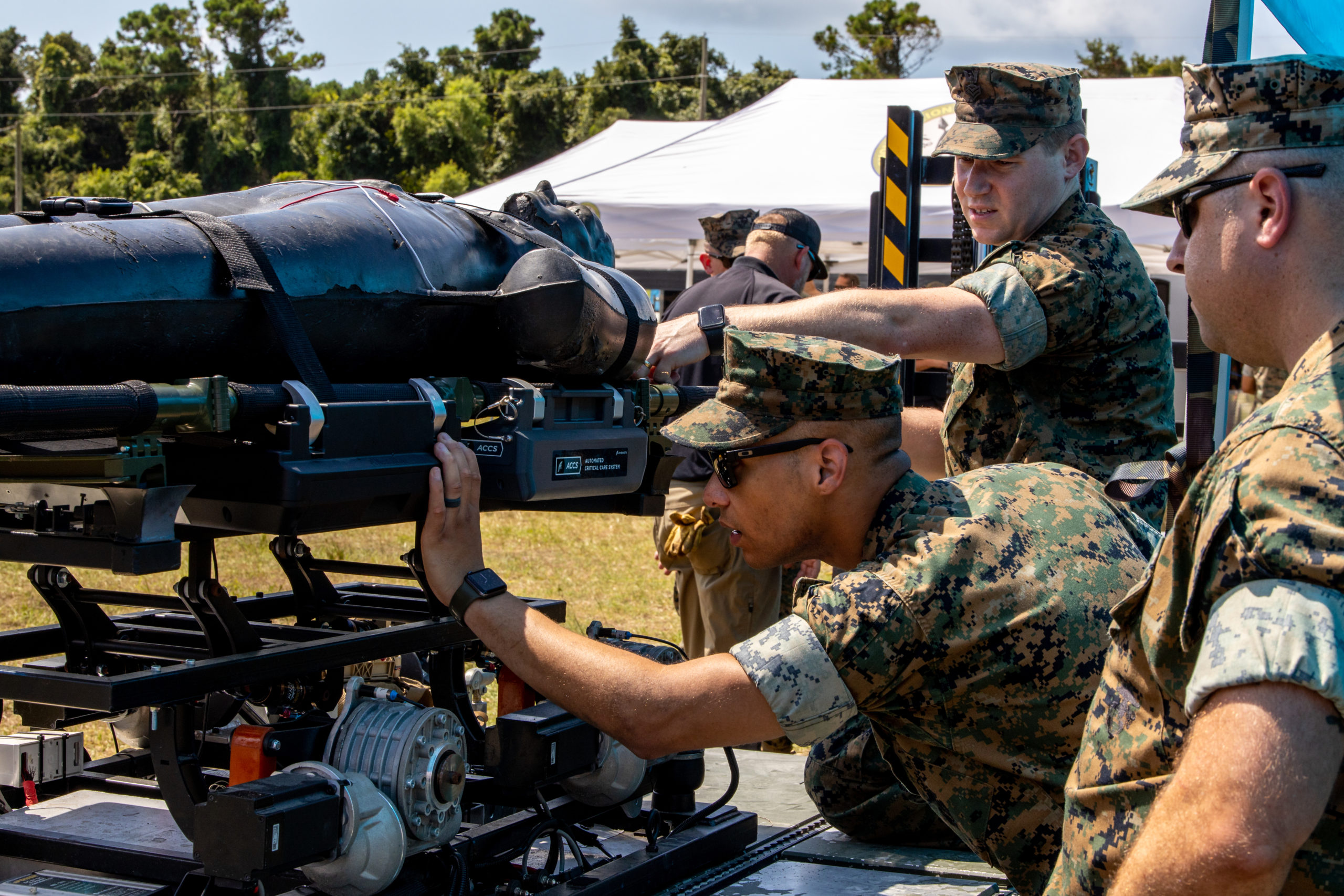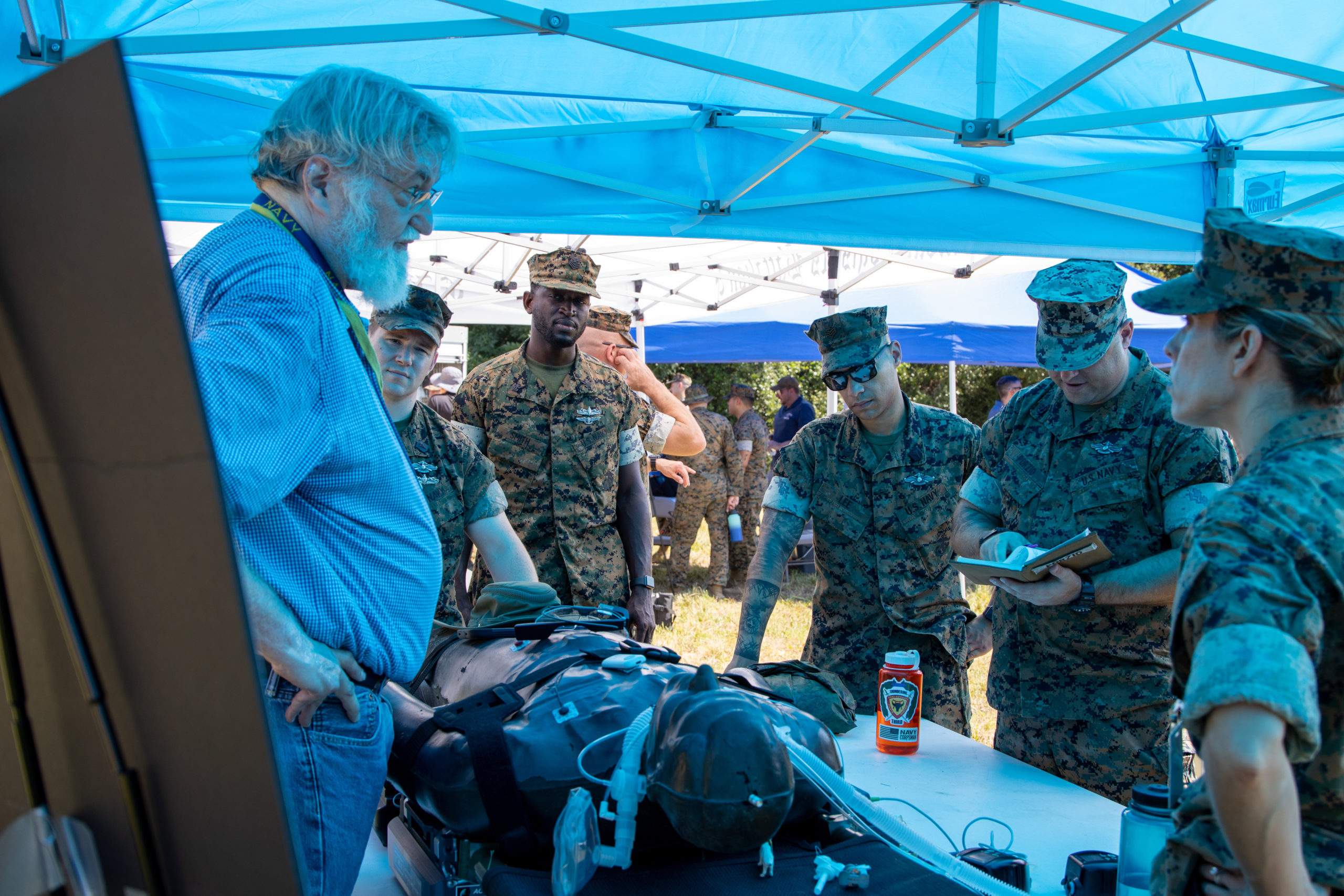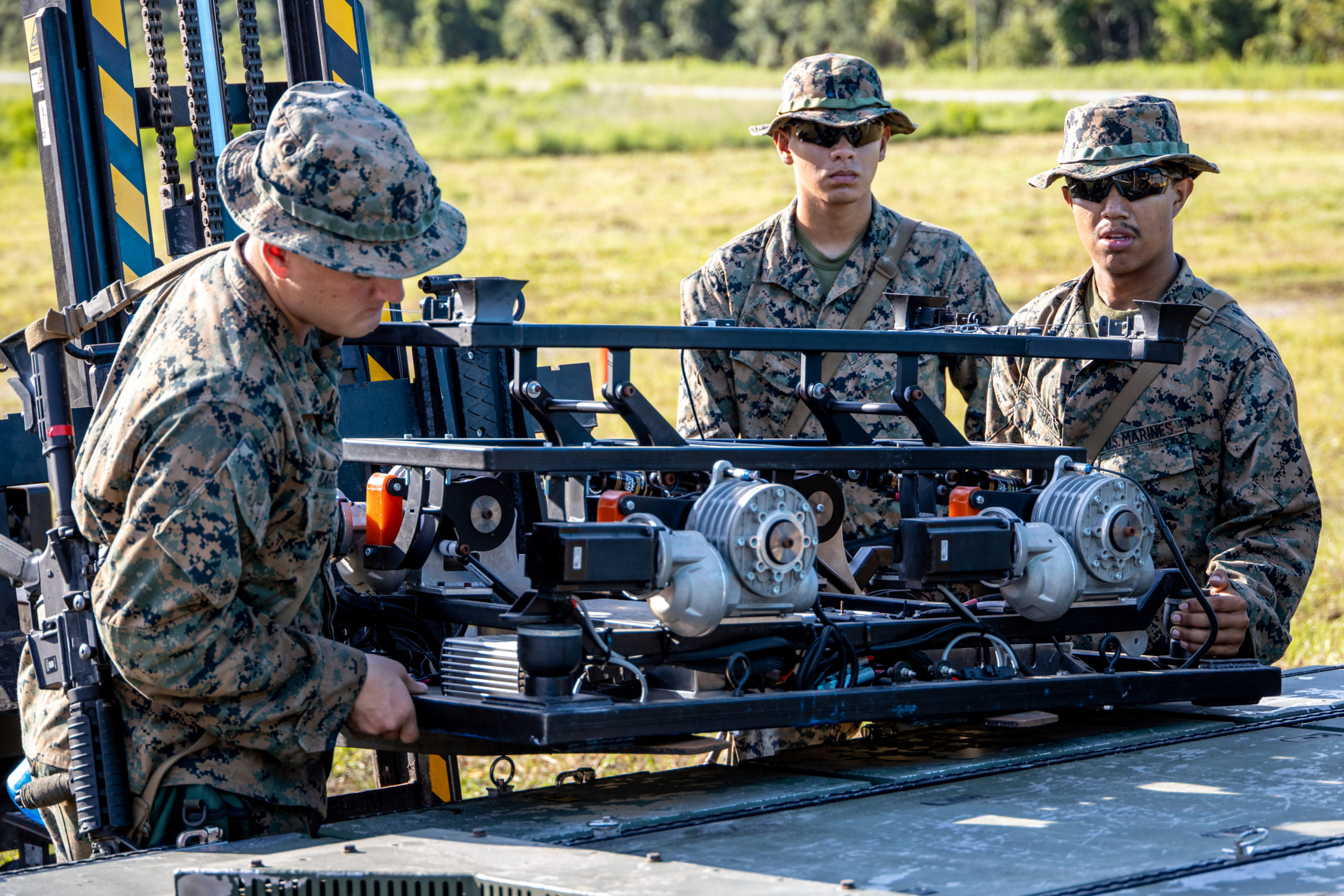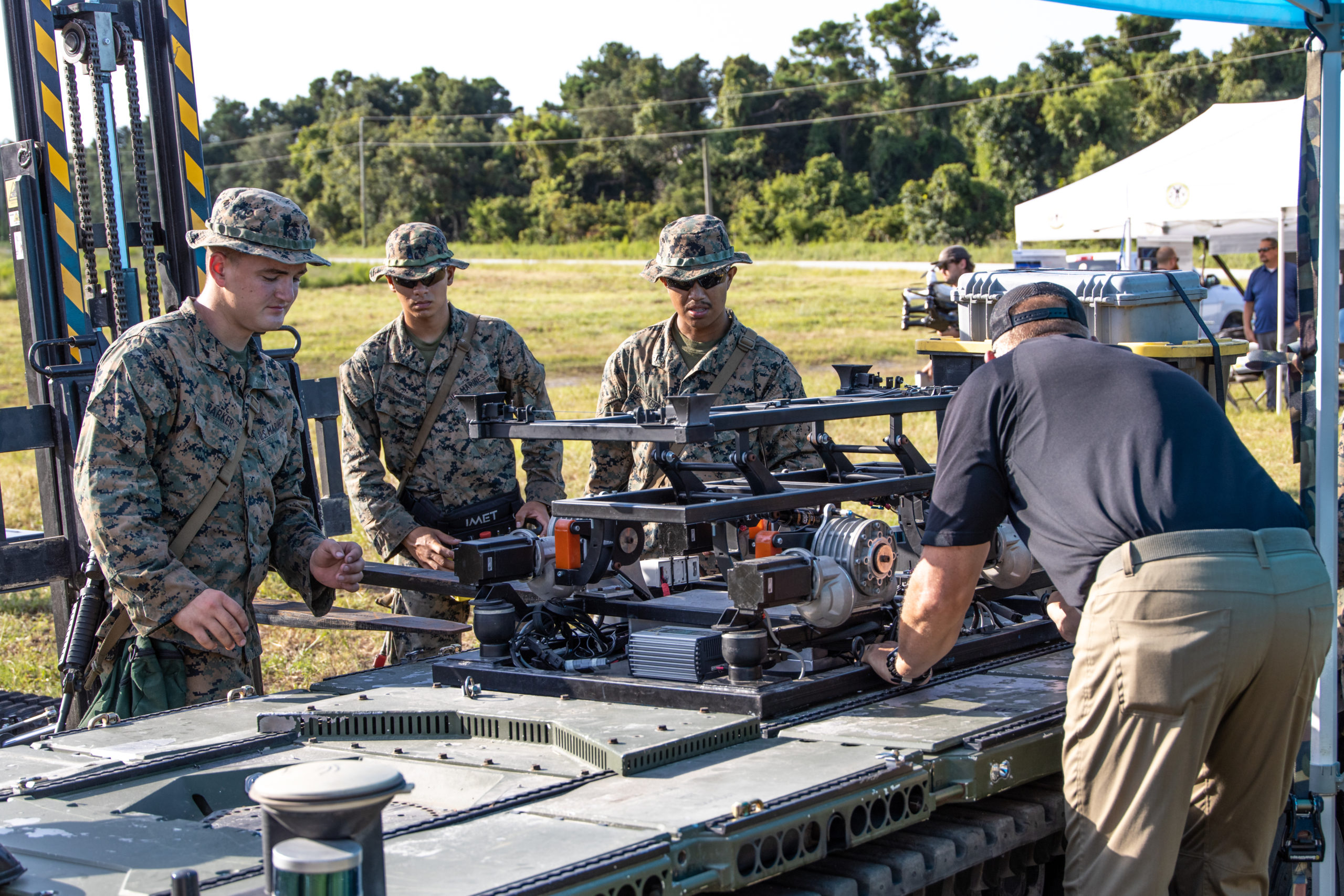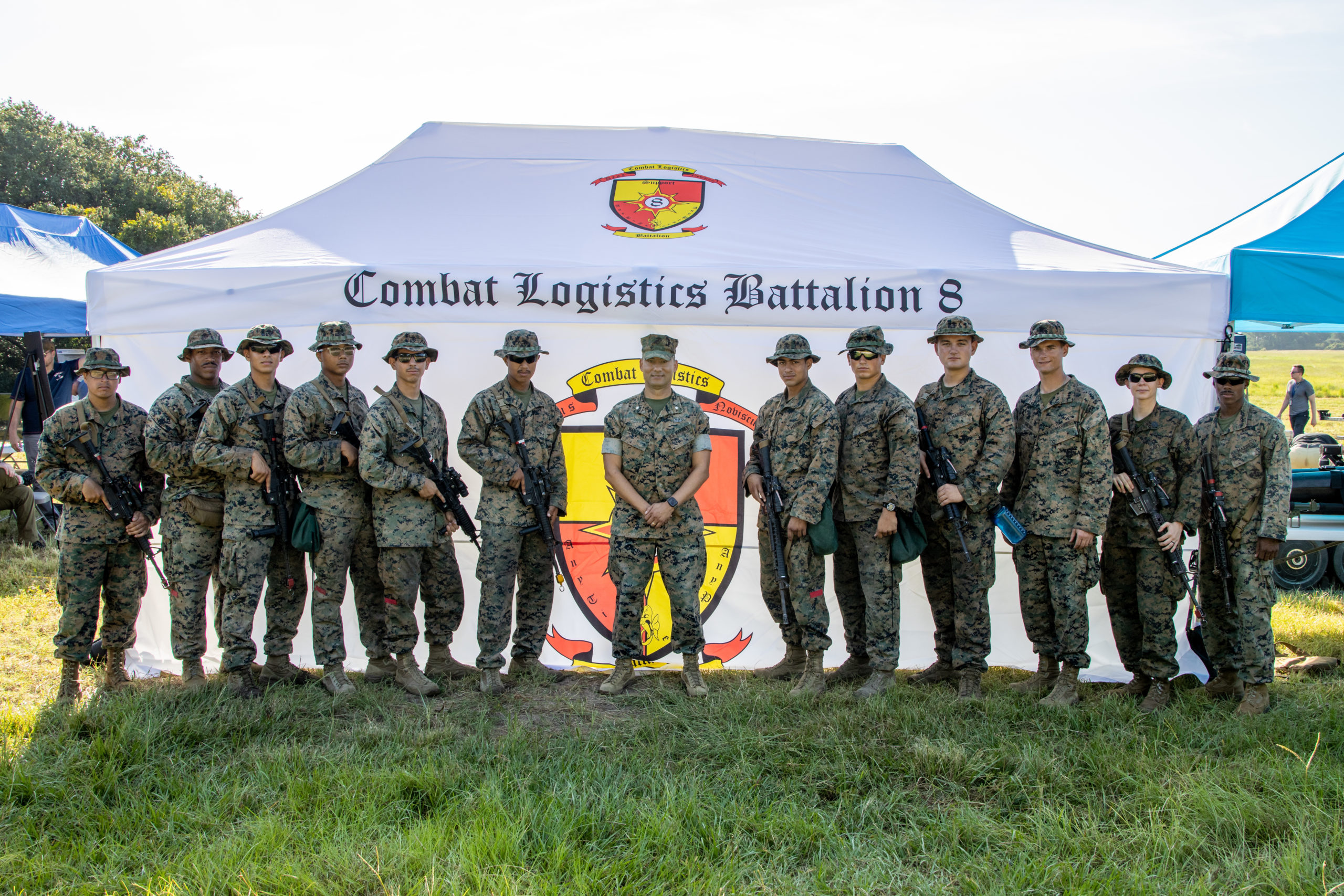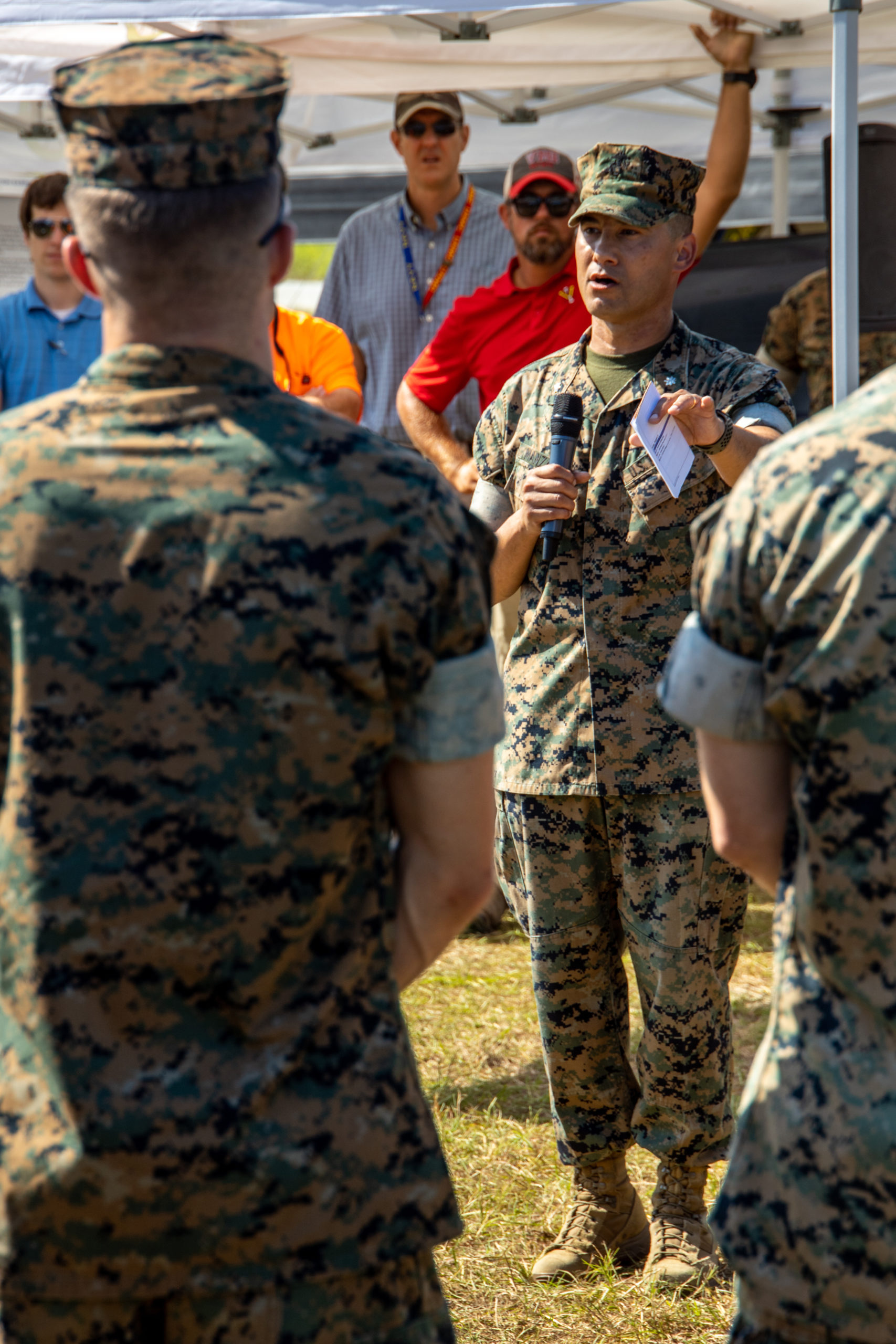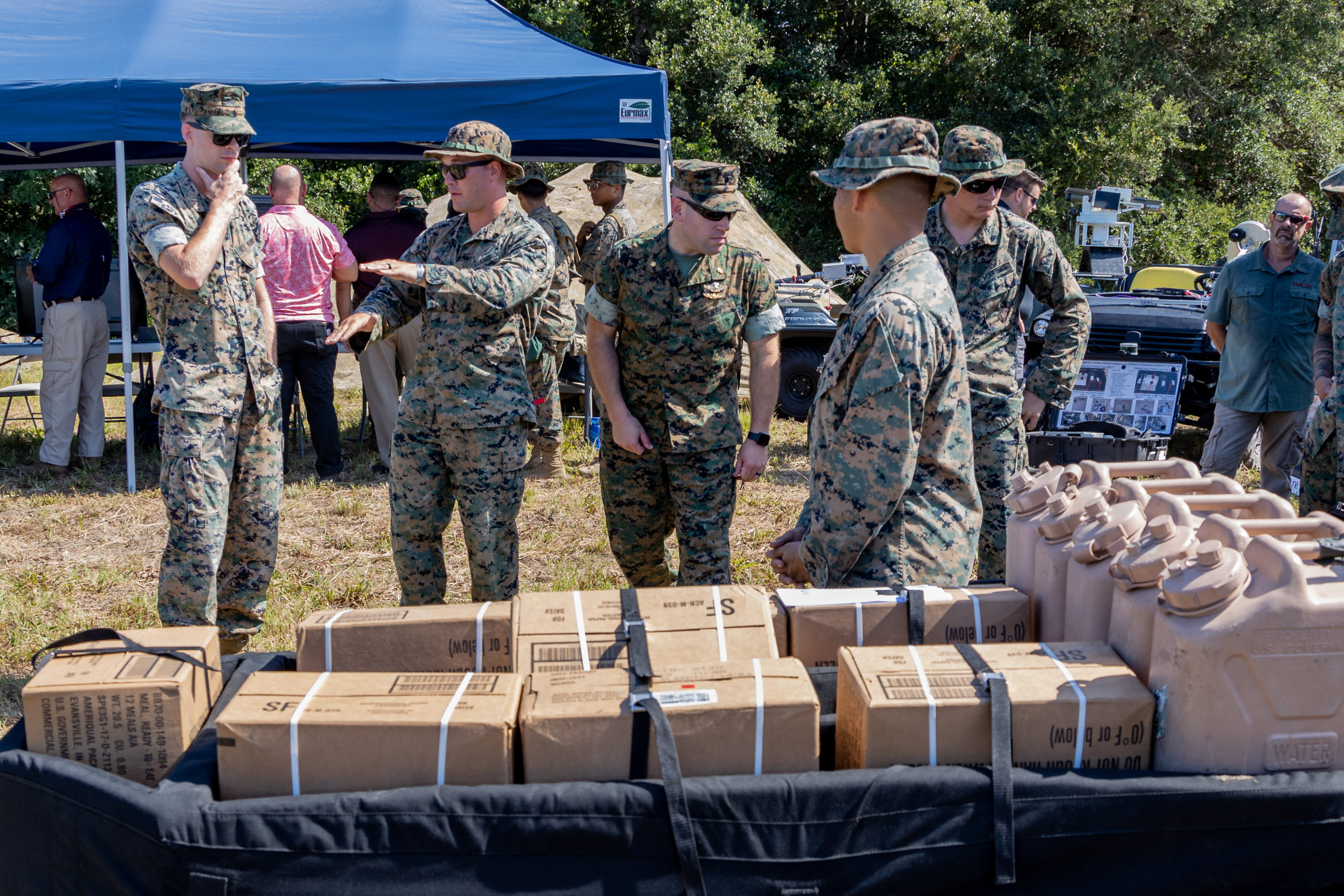The use of robots, unmanned systems, and automation of various kinds is of growing significance to providing logistical support to combat forces.
During the 2021 Williams Foundation seminar on next generation autonomous systems, Col. David Beaumont, a noted ADF logistician and strategist, underscored the growing importance of such systems for the ADF.
In an interview with him after the seminar, this is how he highlighted this evolution of capability for the ADF:
“The new automation and autonomous systems technologies offer great promise and provide valuable tools which will be adopted more widely over time.
“You don’t want to get seduced by technology to the point that you’re taken down some rabbit warrens that create risks in themselves.
“I see automated tools as providing for serious strategy change in a relatively short period of time, rather than overemphasizing what autonomous platforms can quickly provide.”
This month, II MEF in North Carolina conducted Technology Operational Experimentation Exercise (TOEE) 2022 which tested out some ways to do what Beaumont highlighted.
In an article by 1st Lt. Eric Bohnenkamp published on August 29, 2022, the author highlighted the exercise and its results.
U.S. Marines and Sailors, supported by technologists with the Office of Naval Research (ONR) and Marine Corps Warfighting Lab (MCWL), concluded Technology Operational Experimentation Exercise (TOEE) 2022 earlier this month. The event leveraged experimental technologies in realistic, operational conditions, while applying Force Design 2030 and emerging naval concepts, such as Stand-In Forces (SIF).
During TOEE 22, II MEF Marines and Sailors utilized a portfolio of over a dozen experimental logistics, signature management, and command and control technologies to accomplish unit mission essential tasks, while also using their experiences to inform the technologists on how to improve the equipment. These experiences and training also provided a peek into the future of Expeditionary Advance Base Operations (EABO), where II MEF Marines and Sailors would employ new technological capabilities in a fight with a peer adversary.
“The purpose of this exercise is to give technologies to the warfighter, see how they use them and get their feedback, and think about what are the right investments we need to make in future technologies,” said Troy Hendricks, Director of Experimentation and Analysis, Office of Naval Research Global. “We work hand in hand with the Marines in the scenarios to really learn in a relevant, realistic environment how well these technologies perform and it gives us a path forward to improving them.”
ONR has been developing and investing in these technologies to enable Marines and Sailors, in this case, medical personnel, logisticians, and infantry, to address common problem sets and challenges facing the 21st Century warfighter.
“That’s the good thing about this exercise, we’re able to take these things and let the technologists and ONR know that there are some good concepts, but you need to go back to the drawing board on some things for the individual warfighter,” said U.S. Marine Capt. Brennan DePriest, Company Commander, 2nd Battalion, 2nd Marine Regiment.
According to DePriest, the fundamental importance of this exercise to II MEF and the future of the force is that junior Marines, who will face the potential challenges of the future fight, have direct feedback to the technologists on the equipment. It enables the Marines to not just think about those technology solutions, but the capabilities and tactics required to fight as a stand-in force.
“This exercise forced my Marines, especially my small-unit leaders, to not just think about offensive and defensive operations. It also forces them to think about their own sustainment, their own logistical footprint. What it’s going to take for them to sustain their Marines for extended operations going out for 24 hours to a week,” said DePriest.
Of the portfolio that ONR and MCWL fielded, the technology included autonomous vehicles such as the Expeditionary Modular Autonomous Vehicle (EMAV), the Multi-purpose Expeditionary Platform (MPEP), and unmanned quadcopters. All are capable of reducing the battlefield signature of combat logistics battalions in their resupply to Marines and Sailors distributed across the battlespace.
According to 1st Lt. Jamaz Richardson, Distribution Platoon Commander, Combat Logistics Battalion 8 (CLB 8), his platoon was able to integrate the EMAV into existing convoys or utilize the autonomous vehicle as a standalone resupply that could replenish infantry with food, water, and ammunition as a quieter, potentially more survivable method.
Richardson went on to explain that the MPEP, an autonomous forklift, could deliver, break, and reconfigure pallets based upon replenishment requests from the frontline, requiring an individual Marine of any military occupational specialty to facilitate the process.
“It’s a good look at how we can integrate tech such as the EMAV and MPEP, how we can use it to better facilitate logistics in line with concepts for Force Design 2030,” said Richardson. “This tests the lighter footprint of MPEP in place of the TRAM and EMAV, in place of less vehicles on the road. It gives our Marines a chance to focus on other things and to better facilitate resupply.”
Staff Sgt. Nickolas Kallasorg, Platoon Sergeant, 2nd Battalion, 2nd Marines, noted that from the infantry perspective, technologies such as the EMAV and MPEP were a glimpse into how a platoon could receive resupply in the future. “We received water and chow resupply from the EMAV, which was remotely controlled by CLB-8 way down the road,” said Kallasorg. “It was efficient and didn’t cause a very large signature as with multiple trucks going down the road.”
Marines from CLB-8 also paired the EMAV and the MPEP with experimental quadcopters, autonomous drones that provided lightweight resupply to units in the field. This addressed a fundamental problem with expeditionary logistics, providing reliable resupply to Marines distributed over large distances and in austere terrain.
Lt. Col. Saúl Manzanet, Commanding Officer, CLB-8, elaborated on how his Marines used the opportunity of TOEE 22 to understand this problem set better.
“How do you move small payloads into combat without jeopardizing the mission or that cargo? Well, we used a fleet of quadcopters that have a distributed payload,” said Manzanet. “We would recognize the requirement, forecast what the payload would be, and the Marines at the NCO-level would use an autonomous vehicle to go to the warehouse pick up the pallet, break the pallet and have the swarm deliver it across the river without a single, traditional motor vehicle.”
Additionally, some of the technological solutions included alternate power methods that reduced not only the signature of the Marines and Sailors, but also enabled them to be less dependent on fuel and traditional electrical power sources. 2nd Battalion, 2nd Marines utilized these alternate power methods not only to reduce resupply, but to better control the signature of their positions and command post.
“We used the H-SUP, a hydrogen fuel supplied power system for recharging our batteries versus normal small generators, which require us to refuel,” said DePriest. “We were actually able to run the generator at a very quiet level, without much of a heat signature, and put it into buildings. So, once we got into an urban environment, we were able to use them to mask our signature.”
The Demonstration and Assessments Team from Naval Surface Warfare, Indian Head Division (DAT NSWD) was in the field for two weeks assisting the Marines and Sailors in employing the logistics and signature management technologies while also noting the performance and deficiencies of the equipment.
“I can’t overstate state the importance of getting the technology out of the lab and into the field,” said Dillard Patton, Deputy Director for Experimentation and Analysis, Office of Naval Research Global. “Our technologists want to get out into the field and make in-field updates to their system, and they want to do that early so they are able to garner insight prior to the point of full technology development.”
Patton elaborated on how TOEE 22 was a suitable exercise for II MEF Marines and Sailors to apply expeditionary advanced base operating concepts, while also assisting the technologists from ONR in testing the equipment in operational, field conditions. “It’s a double-sided coin in a positive way,” said Patton, “because the technologists get early, operational warfighter feedback and the warfighter gets necessary exposure to that technology to build trust and get a glimpse of what’s coming down the road as we prepare for the future naval fight.”
TOEE 22, although focused on testing and performance of equipment, was fundamentally concentrated on the II MEF warfighter in learning and applying stand-in force concepts. According to Lt. Col. Manzanet, the technology experimented with during TOEE 22 supplies a surrogate for what will be required for the warfighter to be successful on the future battlefield.
“The benefits for us as Marines is to envision a future where we can use technologies to accomplish the mission,” said Manzanet. “The technology serves as a mental jumping point of what is possible in the future, so the feedback that the Marines are giving the technologists and scientists are actually feeding the future design for combat logistics battalions.”
U.S. Marines with Combat Logistics Battalion 8, Combat Logistics Regiment 2, 2nd Marine Logistics Group, test new technologies during their participation in Technology Operational Experimentation Exercise (TOEE) 2022 on Camp Lejeune, North Carolina, Aug. 2, 2022.
TOEE is a joint exercise being conducted to support the Distributed Maritime Operations (DMO) concept for an Expeditionary Advanced Base Operations (EABO) mission from the littorals to inland objectives using manned/unmanned teaming (MUM-T) of technologies as a system to support sustainment and expeditionary logistics.
08.02.2022
Video by Cpl. Jackson Kirkiewicz
2nd Marine Logistics Group
For our interviews with II MEF within the context of analyzing the USMC approach to transformation, see the following:


